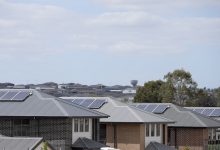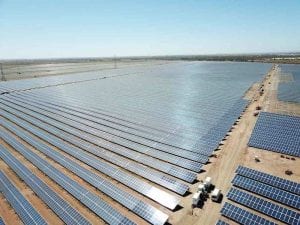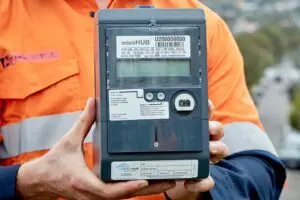A “solar tax” can only be charged to households if their host distribution network operator can demonstrate that supporting additional rooftop PV exports is increasing the costs of operating the network, the Australian Energy Regulator has warned.
In a set of draft guidelines published on Wednesday evening, the AER has stressed that network companies will have to meet strict guidelines and keep consumers well and truly in the loop before acting on last year’s rule change allowing for two-way grid distribution charges.
This will include ensuring that customers assigned to export tariffs have access to a “basic” solar export level, which would act as a threshold below which power may be exported to the grid without any additional charge.
But before they do anything, networks will have to justify the introduction of an export charge and detail how they came to the tariff they wind up proposing.
“It is important to note that enabling two-way pricing does not mean rooftop solar owners will be forced to pay to export solar at all times or indeed, at all,” an explanatory note accompanying the draft guidelines says.
“To obtain our approval for two-way pricing options, distributors will need to demonstrate that supporting additional solar exports is increasing the costs of operating the network,” it continues.
“Under this approach customers will pay export charges only if their exports (either generally or at certain times of the day) contribute to increased network costs.”
For distributors, this “justification” process goes on over a fairly long period, with the AER proposing the submission of tariff structure statement proposals up to three years before a new regulatory control period (which come around every five years), allowing plenty of time for review, public feedback, changes and determinations.
The AER has also proposed holding off on the introduction of solar export tariffs across the National Electricity Market until 1 July 2025, at the earliest, when it would come into play in the ACT, New South Wales, Tasmania and the Northern Territory.
South Australia and Queensland would follow suit, with a transition period kicking off in July 2025, and Victoria – where the state government has been vocal in its opposition to the adoption of a solar tax – is proposed to get another year’s grace.
The AER said the rules around two-way pricing should encourage distributors to signal to customers when it is better to consume their own rooftop generated solar electricity and when it is better to export it.
“Where justified and in consultation with their customers, retailers and other stakeholders, distributors may develop a range of two-way pricing and service options,” the note says.
These options could include rebates for customers in return for them opting to export at certain times to alleviate network investment pressures.
“In response to different two-way pricing options, customers with rooftop solar may choose to use more of their own solar generated electricity in the middle of the day,” the explanatory note says.
“Customers newly installing rooftop solar may choose to install it facing west, to take advantage of rewards for late afternoon exports. And customers may choose to invest in storage to… use their own energy during the evening peak period, or export at that time.”
The AER’s draft guidelines follow the August 2021 decision by the Australian Energy Market Commission to approve proposed rule changes around pricing and incentive arrangements for distributed energy resources.
As Mark Byrne wrote here last week, the process leading to this point not been without controversy, including heated debate over the justifications of a “solar tax,” and the effect it could have on the uptake of rooftop solar in Australia in what is a crucial decade for emissions reduction.
Critics of the export tariff, such as Bruce Mountain and advocacy group Solar Citizens, have argued that charging solar households for exports is unnecessary, will inevitably be inequitable, and is counter-intuitive as the entire grid moves to a distributed renewable energy model.
In an email to RenewEconomy on Thursday, Mountain – who is director of the Victorian Energy Policy Centre – said his initial view of the draft guidelines was that they invited “competing interpretations.”
“On the one hand, we know from the AER’s revenue controls on distributors that distributed energy integration expenditure has been small as a proportion of distributors’ total expenditure.”
“None of the distributors have sought to substantiate any claim that this will change greatly in future. So, prima facie we should expect that if the distributors follow the AER’s guidelines then export charges will be inconsequential,” Mountain said.
“This then begs the question of why the whole rule change, with its over-wrought claims of costs and DER cross-subsidies, was ever put on the table?”
“Alternatively, what the AER has set out – which it describes as ‘principles-based rather than prescriptive’ – will in practice leave distributors with discretion to exert their monopoly power… to extract rent from solar homes in order to protect their own interests. Monopolies tend to do such things if given half a chance,” he said.
Byrne, who is energy market advocate at the Total Environment Centre, one of the groups that proposed the two-way charging rule change, said earlier this week that TEC had been impressed with AER’s efforts to hear a diverse range of stakeholders, including opponents of the rule, and to take a diligent approach to “substantive issues.”
In a statement on Thursday, Byrne added that the TEC was particularly pleased that the AER had resisted the push from some networks to recover sunk or historic costs via tariffs on solar and battery exports.
“In other words, networks will only be able to use export tariffs to recover additional costs associated with high levels of DER exports, rather than hitting on solar owners to recover the costs involved in originally building the network for grid supply,” he said.
Solar Citizens, which has also been approached for comment on the draft rules, is cited in the AER’s explanatory note as “broadly supporting the scope of the guildelines.”
In a section on stakeholder engagement, the AER notes that Solar Citizens’ submission discussed the importance of distributors having targeted strategies to engage consumers from a spectrum of demographics – and said it agreed with this view.










